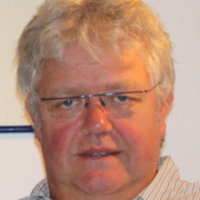Presentation
ESiWACE: What is Special about HPC Computing for Weather and Climate?
BoF Organizer/Speakers
Event Type
Birds of a Feather


HPC workflows
Parallel Algorithms
Parallel Applications
Programming Models & Languages
Scientific Software Development
TimeTuesday, June 26th8:30am - 9:30am
LocationPikkolo
DescriptionHPC is critical to the weather and climate community for the delivery of accurate results in a timely fashion. The weather and climate community represents one of the largest industries for the procurement and utilisation of dedicated HPC systems. As such, the motivation for improved performance, both in terms of numerical accuracy and time to solution, is helping to drive and shape the industry.
However, the scientific applications and workflows used by the weather and climate community have several specific requirements which are unique to the industry. Comprehending these requirements, can help industry vendors design solutions which are better suited to the weather and climate simulation and the associated workflows, in turn advancing the performance capabilities of the whole community.
This BoF session brings together representatives from industry and scientific communities to discuss the HPC challenges in weather and climate computing.
The session will begin by the presenters each delivering a short introduction, detailing their perspective on these challenges, and then participating in an interactive panel session.
Discussions will focus on the following main topics: heritage and evolution of scientific codebases; model coupling; data storage, handling and distribution; and system benchmarking, procurement and deployment.
This BoF is designed to discuss these industry specific requirements and widen the dialogue with HPC vendors about the needs and concerns of the weather and climate community.
This session is an output from the European H2020 ESiWACE Centre of Excellence, a pan-European initiative to address key scientific challenges in weather and climate modelling.
However, the scientific applications and workflows used by the weather and climate community have several specific requirements which are unique to the industry. Comprehending these requirements, can help industry vendors design solutions which are better suited to the weather and climate simulation and the associated workflows, in turn advancing the performance capabilities of the whole community.
This BoF session brings together representatives from industry and scientific communities to discuss the HPC challenges in weather and climate computing.
The session will begin by the presenters each delivering a short introduction, detailing their perspective on these challenges, and then participating in an interactive panel session.
Discussions will focus on the following main topics: heritage and evolution of scientific codebases; model coupling; data storage, handling and distribution; and system benchmarking, procurement and deployment.
This BoF is designed to discuss these industry specific requirements and widen the dialogue with HPC vendors about the needs and concerns of the weather and climate community.
This session is an output from the European H2020 ESiWACE Centre of Excellence, a pan-European initiative to address key scientific challenges in weather and climate modelling.
BoF Organizer/Speakers


